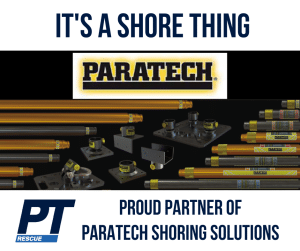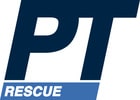
The Most Capable Shoring Systems in the World – Brought to you by PT Rescue
Paratech shoring systems are widely used in rescue operations to provide structural support and stabilization in collapsed or unstable structures. These systems consist of various components that work together to create a secure framework, allowing rescue personnel to safely access and extricate individuals trapped in hazardous environments. Here’s an overview of how Paratech shoring systems work in rescue applications:
- Assessment: Before deploying a shoring system, the rescue team assesses the structural integrity of the collapsed or unstable structure. They identify the points of instability and determine the type and extent of support needed.
- Component Selection: Based on the assessment, the team selects appropriate Paratech shoring components, such as hydraulic shores, raker shores, steel trench boxes, or other specialized equipment, to address the specific requirements of the situation.
- Installation: The chosen shoring components are assembled and installed in a strategic configuration. This typically involves placing vertical or inclined shores against the structure’s walls or ceiling and connecting them with cross beams or struts to distribute the load.
- Hydraulic Shores: Hydraulic shores, a common component in Paratech systems, use hydraulic pressure to exert force against the structure, providing support and preventing further collapse. They consist of telescopic tubes that can be extended or retracted to match the required length. Hydraulic cylinders are used to apply pressure and create the necessary support.
- Raker Shores: In situations where vertical support is insufficient or impossible, raker shores are used. Raker shores consist of inclined beams or shores that transfer the load from the unstable area to a stable point outside the collapse zone. They are secured at both ends and provide angled support to stabilize the structure.
- Bracing and Cross Beams: Cross beams or struts are used to connect and reinforce the shores, creating a stable framework. These beams help distribute the load evenly across the shoring system and prevent any shifting or movement that could compromise the structure’s stability.
- Monitoring and Adjustments: Throughout the rescue operation, the shoring system is monitored for any signs of stress, movement, or additional collapse. Rescue personnel make necessary adjustments to the shoring components to maintain stability and ensure the safety of the rescue operation.
Paratech shoring systems are designed to be versatile, modular, and easy to deploy in challenging environments. They provide a robust and reliable means of stabilizing structures during rescue operations, allowing responders to work safely and efficiently in unstable conditions.
